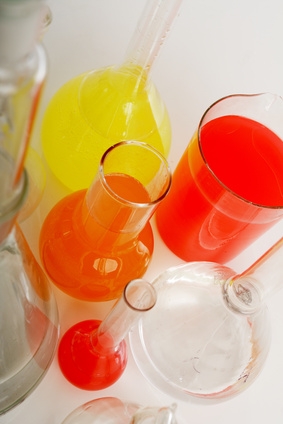
Specific gravity, or relative density, is the ratio of the density of a material compared to the density of water at a specific temperature. It is expressed without a unit designation. The density of water is one gram per cubic centimeter. If the specific gravity of a liquid is more than that of water, the liquid will sink. If the specific gravity is less than that of water, the liquid will float on top of water. The food industry routinely uses specific gravity to measure the concentration of processed food ingredients to assure production of consistent finished goods.
Place the container on the scale to determine the weight of the empty container. Write down the weight of the container.
Pour into the container a specific quantity of water---10 ounces, for example. Weigh the container. Write down the weight of the container and water. Subtract the weight of the empty container from the weight of both container and water to calculate the weight of the water alone. Empty the water from the container and dry the container.
Pour 10 ounces of olive oil into the container. Weigh the container. Write down the weight of the container and olive oil. Subtract the weight of the empty container from the weight of both container and olive oil to calculate the weight of the olive oil alone.
Divide the weight of the olive oil by the weight of the water. The specific gravity of olive oil is approximately 0.91 at 60 degrees Fahrenheit. Test the result by pouring some olive oil over some water in a container. Stir the contents and observe that the olive oil floats to the surface of the water.